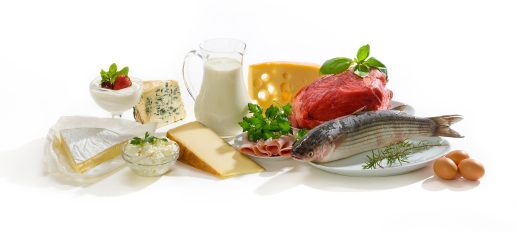Tess Pennington
Ready Nutrition

Being well-nourished during a disaster can mean the difference between powering through the event with strength, stamina and energy or plodding through the situation barely able to put one foot in front of the other.
One often overlooked component of the prepper’s pantry is protein. This vital nutrient:
- Helps with the repair and building of muscle tissue
- Helps the body heal from injuries
- Provides long-lasting stamina
- Helps boost the immune system
Protein is often thought of as one of the more challenging items to stockpile for an extended period of time. Most people think of a freezer full of juicy steaks and roasts when they contemplate protein. They feel that the next resort is tins of highly processed meat pieces. The good news is, there are many ways to add muscle-building nutrients to your long term food storage without resorting to a sodium laden closet full of Spam.
To see a breakdown of protein amounts in food sources, click here.
Although pantry basics such as dry non-fat milk powder and powdered cheeses offer protein for the diet, there are other food sources to consider. Here are the top 5 healthy (and tasty) protein sources to add to your stockpile:
Beans
Beans are more than just a vegetarian staple. While beans can stand on their own as a delicious protein source, adding beans to a dish that contains meat can stretch your budget by providing lots of protein while using less meat.
Due to their high fiber content, beans prevent blood sugar levels from rising too rapidly after a meal, making this food source an excellent choice for individuals with diabetes, insulin resistance or hypoglycemia. Having a high fiber food source also helps to slow the rate of absorption of carbohydrate thus making it a more energy efficient food source.
Dried beans provide the most bang for your food storage buck. They are one of the most low cost food sources on the market. The canned variety will prove to be more fuel efficient. Canned beans can often be purchased on sale. Plain canned beans and beans in barbecue sauce can provide instant nutrition in the event of a power outage. If you don’t want to eat beans that have been processed, it’s easy to can your own. Click here for directions on preserving homemade pork and beans.
Store dried beans in Mylar bags with oxygen absorbers, then placed the sealed bags inside large plastic food grade buckets for added protection. Click here for details.
Chia Seeds
The Chia seed is a tiny little powerhouse that can add a lot of benefits to your long-term food storage while only taking up a small amount of space. The word “Chia” is actually the Mayan word for strength. In ancient cultures, they are considered the food of the warrior because of their nutrient density and ability to sustain running messengers for long durations without other food.
Chia seeds have double the amount of protein found in other seeds, as well as many other nutritional benefits.
- 2x the protein of other seeds
- 5x the calcium of milk
- 2x the potassium of bananas
- 3x the antioxidants of blueberries
- 3x the iron of spinach
Chia seeds can be stored for 2-4 years in a cool, dry place. They can be stored in large glass jars or Mylar bags.
Click here to learn more about the nutritional value and uses of Chia seeds.
Read More Here





No comments:
Post a Comment
Hello and thank you for visiting my blog. Please share your thoughts and leave a comment :)